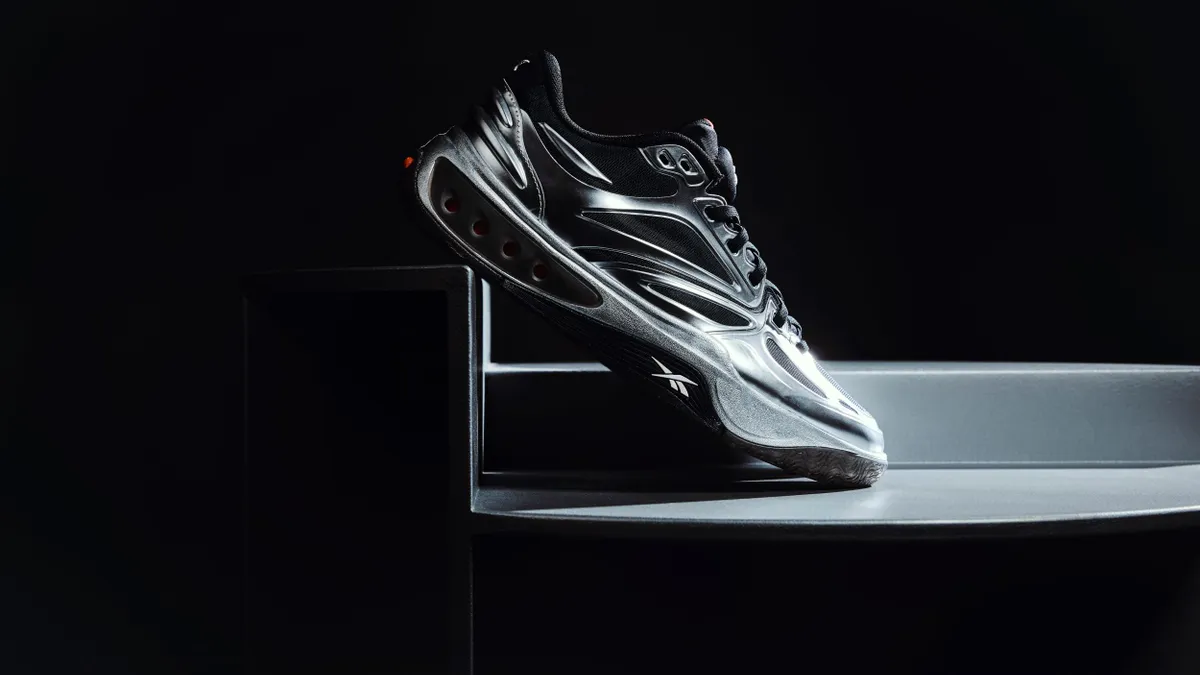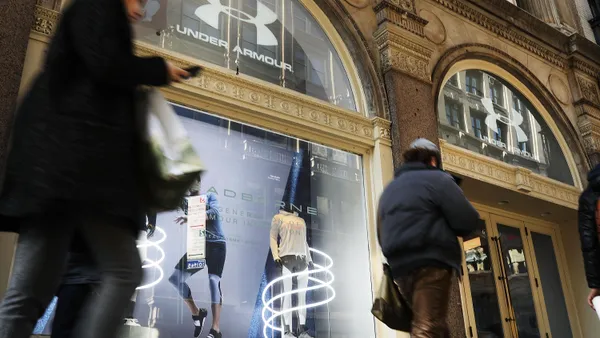Pier 1's bankruptcy filing this week likely came as no surprise to most observers, after the past two years of losses, executive churn, credit downgrades and the menagerie of advisers hired to help the retailer forge a financial path forward.
If Pier 1 entering Chapter 11 came as anticlimax, there is still the open question of what comes next for the home goods seller. In its early court filings, Pier 1 set a full table of possibilities. Dishes on menu range from sale of the company to liquidation, and everything in between.
In bankruptcy, Pier 1 faces an existential crisis similar to that of dozens of retailers in these years of heightened bankruptcies. Hanging over the company are some fundamental questions: Does the world need Pier 1? Is the retailer worth more whole or in parts?
In bankruptcy documents, executives made the case that there is a business worth salvaging for some prospective buyer or the company's current lenders. But efforts to make Pier 1 relevant again in the home decor and furniture market so far have failed — drastically, at times. And the company has been more or less up for sale for some time now. So far, nobody has stepped up to buy it.
The path to Chapter 11
Pier 1 launched in 1962 with a single store in San Mateo, California. Its early business model — of trading on a high-value American dollar to ship in cheap goods that it could sell profitably at low prices — would become ubiquitous in retail. But it was unique at the time. Its prices attracted baby boomers who bought up the beanbag chairs, love beads, incense and other 1960s fare.
The company steadily expanded, went public and by the early 2000s opened its 1000th store. Today, decor makes up about two-thirds of Pier 1's sales, with furniture making up the rest. About 27% of its current sales are online.
As the retailer's new CEO, Robert Riesbeck — a veteran executive of private equity and retailers, a couple of which went through bankruptcies — told the story in court papers, Pier 1 was the victim of a "perfect storm" of changes to the retail landscape. On the list are online migration, competition with mass merchants like Walmart and Target, the rise of direct-to-consumer brands and resale, and shifts in consumer spending.
As analysts have noted, Pier 1's value proposition has also steadily eroded over time, as imports took over retail. Today, off-price and discounters can offer their own "treasure hunt" experience, selling comparable products at lower price points than Pier 1, while Williams-Sonoma and others have taken over the luxury side of the market. Digital players like Amazon and Wayfair have also gained share of the home goods, which has become more fragmented and competitive over time.
As Pier 1's sales and profits declined, the retailer tried to turn things around under then-CEO Alasdair James by pivoting to cheap, mass market goods to compete on price. But that strategy, as analysts have told Retail Dive and Riesbeck acknowledged, proved disastrous. Some six months after Pier 1 announced its "A New Day" turnaround strategy, it reported comparable sales declines of more than 11% and a net loss surpassing $50 million in a quarter.
From there, the company sank ever-deeper into the red, even after James left and Pier 1 tried to pivot again. The retailer was left with a large quantity of low-price, low-quality products it had to unload before revamping its strategy, leading to losses. As Pier 1's losses mounted and liquidity tightened, behind the scenes some vendors have signaled they wouldn't ship to Pier 1 without advanced payment, compounding its liquidity woes, Riesbeck said.
Unlike other retailers to fall into bankruptcy in recent years, Pier 1 never carried a massive debt load. Rather, it took such a whooping in the market that it started burning cash, until it had to make the trip to bankruptcy court.
A tough sell
Pier 1 entered Chapter 11 with plans to sell itself, close down its Canadian operations, and shutter up to 450 stores, a previously announced move that bankruptcy will make significantly easier and would leave the retailer with a base of about 540 stores.
Riesbeck said that nearly two-thirds of lenders have agreed to a multi-pronged plan that allows for a sale or for converting debt to equity in Pier 1. But who would want to buy Pier 1, and in what form?
It's a question worth asking, especially given that Pier 1 has been on the sale block for more than a year. According to Riesbeck, the retailer, with help from Credit Suisse Securities, sought out merger and sales proposals starting in late 2018. That process ended without any "actionable proposals," Riesbeck said. As the company's flailing turnaround rolled on, the company brought in more restructuring and turnaround professionals.
Early this year, with help from investment bank Guggenheim Securities, Pier 1 launched a broader effort to market itself. The parties contacted around 95 possible buyers and investors — ranging from strategic and financial investors to brand and intellectual property specialists to inventory buyers. So far, 35 have signed or are in the process of signing nondisclosure agreements, indicating at least some serious interest.
That process is continuing into bankruptcy. But Pier 1 filed without a dark horse bidder, which would have set a minimum bid for any auction and guarantee that the retailer had some kind of deal for itself when the bid deadline came due.
"I think it would be tough to get a buyer," Cristina Fernández, director and senior analyst with Telsey Advisory Group, told Retail Dive. She points out that Pier 1 ran a sale process without a buyer. "Among the companies we cover, I don't see who would buy them."
Bed Bath & Beyond, to take one example, is one of Pier 1's largest competitors, but as Fernández notes, that company has problems of its own. Private equity is another possible scenario, "but it's hard to turn around a company that has been generating double digit comp [declines]," she said.
Riesbeck took pains to describe Pier 1 as a business worth saving, noting the company's digital penetration (which Fernández says falls roughly in the median among home goods retailers). He also noted the performance of its go-forward stores — with sales 15% higher than those that are closing — and positive signs around the company's most recent strategy, toward fewer SKUs and curated products of proprietary design.
"[T]he management team and its advisors, under the direction of a highly functioning world-class board of directors, will stop at nothing to keep the lights on for this retail mainstay," Riesbeck said.
'No decision at this point'
But at this point, all options are on the table. Pier 1 could be sold as a going concern — that is, an intact and operating company — or sold in parts. Or it could be liquidated for the value in its inventory. The company has set court-approved deadlines of March 23 for bids and March 31 for an auction, if needed.
A piecemeal sale could include Pier 1's intellectual property, which may still retain value even if the company's operations prove unattractive to the rest of the world. Fernández said that Pier 1 still has strong recognition, namely in home decor and accent products, like pillows and seasonal merchandise. She pointed to the possibility that mid-tier department stores (like J.C. Penney or Kohl's) could carry the brand's assortment in stores.
Conversely, the retailer's lenders could convert their debt to equity in a reorganized Pier 1. Riesbeck said that "[t]o be clear, the term loan lenders have made no decision at this point."
Pier 1's lenders will drive the process, and their ultimate decision would likely depend on what kinds of bids emerge for the retailer's assets, James Van Horn, a partner in Barnes & Thornburg's restructuring and insolvency practice, told Retail Dive.
As has happened in many past retail bankruptcies, lenders could decide ultimately that liquidating the company is the most efficient and certain way to get repaid. "Right now, the debtor [i.e., Pier 1] believes possibility of reorganizing around these remaining stores. That's what the debtor put in writing," he said. "Debtors often say that. It all comes down to economics and math, and what does the business plan look like?"
Debtwire legal analyst Sara Tapinekis said in an interview that Pier 1's funded debt appears to be closely held, which would mean there are fewer parties to negotiate with and get to agree, and added it was a positive sign the large majority of term lenders signed on to Pier 1's plan so far. "It seems like we've got people who are really willing to work and who's interests are being addressed," she said.
"At this point it comes down to who's willing to bid on the company," she added. "The lenders have to believe there is some chance of getting a going concern if they're willing to fund a case this far — but they're not funding it too far. They must think it's worth at least funding this process to see."






















